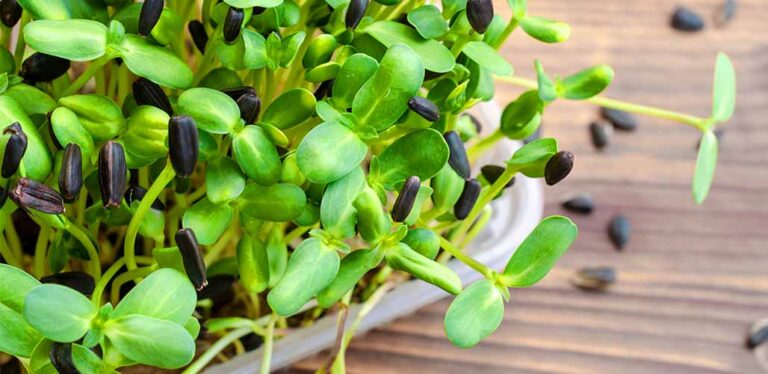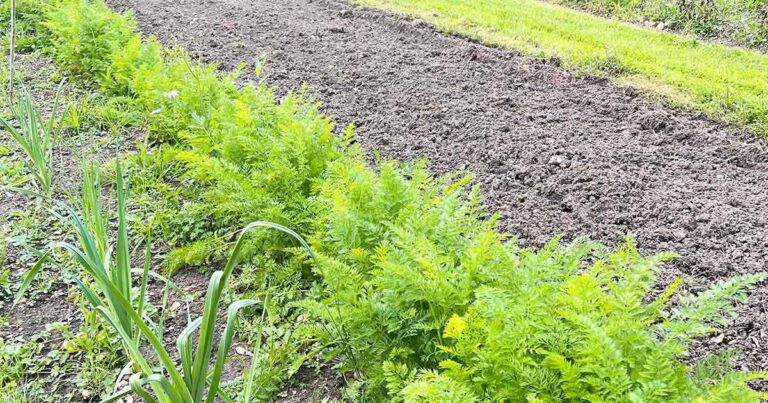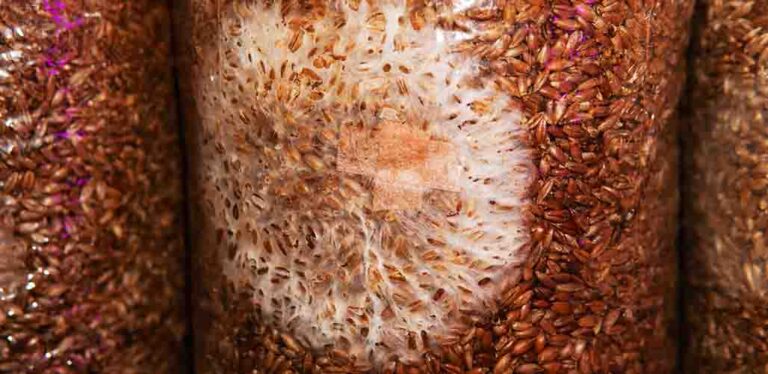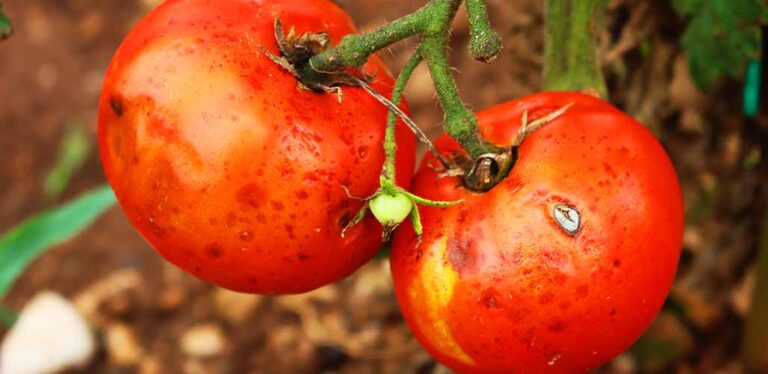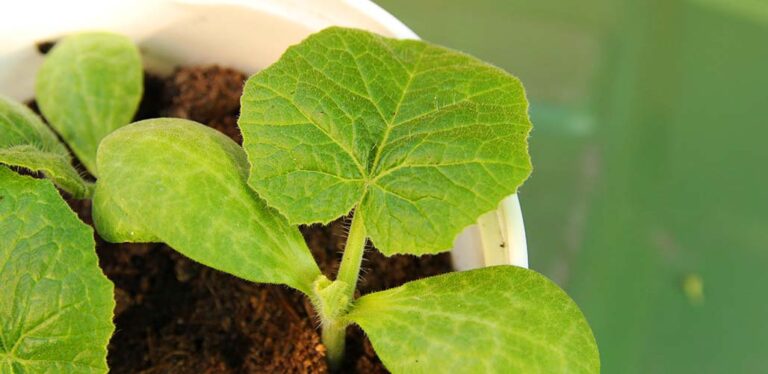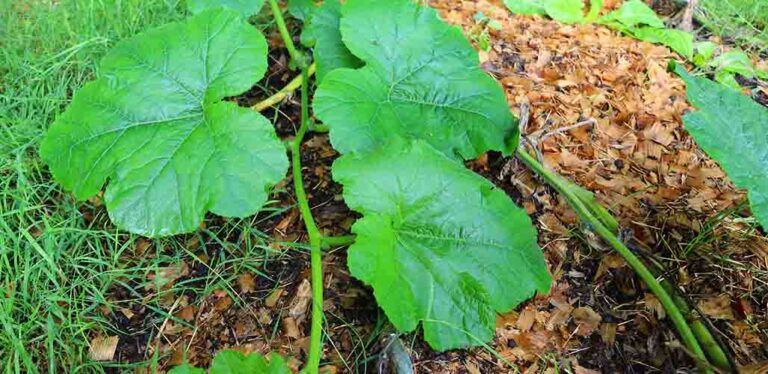Pumpkin Leaves Turning Yellow

Welcome to our complete guide to what causes pumpkin leaves to turn yellow, when yellow pumpkin leaves mean a big problem for the plant, and how to treat vines with yellow foliage.
- Why are my pumpkin leaves turning yellow?
- How do you fix yellow leaves?
- Should you cut off yellow leaves from pumpkin plants?
- Growing tips for healthy green pumpkin leaves
Pumpkin leaves turning yellow could be a sign that they are under some kind of environmental stress, or they have a disease or pest problem. But it can also simply mean that they’re reaching the natural end of their life cycle too.
In this article, we’ll help you identify and manage different types of yellow foliage on pumpkin plants, so that you can grow large yields of healthy fruits, just like the ones in this amazing video (ok maybe not quite so many!)
Help! My pumpkin leaves are turning yellow!
Pumpkin leaves get their normal green color from chlorophyll – a green pigment which absorbs light energy from the sun, for the plant to turn into chemical energy via photosynthesis. When plants’ leaves don’t have the usual amount of chlorophyll in them, they turn yellow. The plant biology term for this is ‘chlorosis’, and leaves affected by chlorosis are also less efficient at producing energy for the plant. So generally, green leaves are better, and if your pumpkin vine’s leaves are yellow you’re right to be a little concerned!
Why do pumpkin leaves turn yellow?
There are several causes of chlorosis in pumpkin plants. You’ll need to work out which one applies to yours by reading the descriptions, and working out which fits best. If you have difficulty narrowing it down to just one cause, post a photo of your plants in one of the many friendly online gardening forums for a second opinion.

1. Natural aging
It’s not unusual for the oldest leaves on a pumpkin vine to start turning yellow once there are lots of newer leaves to take over their work. This happens because nutrients in the plant – including nitrogen which is used to make chlorophyll – are mostly redirected to the newest leaves. If you’re new to pumpkin growing, it’s understandable to be startled by the change in appearance.
To tell if your pumpkin leaves are yellowing from old age, look for the growing tip of the plant and check what color the newest leaves are. If they are a healthy green, then the yellow leaves might just be old. Old leaves are also more likely to turn yellow at the edges first, rather than the middle. This pattern of yellowing can be exaggerated by a process called guttation. Guttation is when plants exude droplets of sap from the edges of their leaves. It’s a way of managing water levels and releasing excess water taken up by the roots. It can also cause the edges of older leaves to turn yellow quicker, but that doesn’t mean it’s a bad thing. Besides regulating water levels inside the plant, guttation also attracts valuable pollinating insects, which drink the sap droplets.
Finally for this section, remember that pumpkins are annuals, meaning they die completely at the end of summer. So come harvest time in September or October, you don’t need to worry about the color of your pumpkin leaves as it’s normal for them start turning yellow and wilting. Instead, you’ll be able to worry about whether or not to leave your pumpkins on the vine!
2. Water stress
During the growing season, a common cause of pumpkin leaves turning yellow is water stress. Water stress (not having enough water) can be the result of
- Drought.
- Hot weather.
- Growing in light or sandy soil which drains very quickly.
- Being planted at the top of an incline, so water runs away from the plant rather than soaking into the ground around it.
- Being confined to a container which is too small.
- Or a combination of these factors.
3. Nutrient stress
Another common reason why pumpkin leaves yellow is nutrient stress. Specifically, not having enough nitrogen to make chlorophyll. Pumpkins are large plants and notoriously greedy, so if the soil they’re growing in isn’t already extremely fertile they need regular feeding throughout the growing season to compensate.
4.Pests
Our next culprits are pests. There are several pest species which make their homes or lay eggs on pumpkin plants, so that they or their larvae can feed off the sap. Unfortunately, taking sap out of leaves restricts the internal movement of water, energy and nutrients, causing the leaves to turn yellow and eventually die back.
Common pest of pumpkin plants which can cause yellowing of the leaves include:
- Spider mites
- White fly
- Squash bugs
- Squash vine borers
5. Diseases
Finally, yellow leaves can be the result of a virus, bacteria, or fungus infecting your pumpkin vines. A notable example causing concern for commercial pumpkin growers at the moment is cucurbit chlorotic yellows virus, or CCYV. CCYV is transmitted by white fly, and as the name suggests, causes pumpkin leaves to turn yellow, then eventually die back. Depending when in its life cycle the plant is infected, this can have a devastating effect on yield too. Until recently the virus had only been reported in some Asian, African and Mediterranean countries. But as of 2021, it has been confirmed in North America too.
What do you do when pumpkin leaves turn yellow?
When pumpkin leaves turn yellow, it’s time for action!
First, examine the underside of the leaves and the stems for signs of pests. If you find any, they can be washed off using organic or non-organic insecticidal soaps available in stores and online.
Next, give your plants a big drink of water with general purpose fertilizer or organic liquid seaweed added. You can also use any homemade fertilizers you’re producing, such as compost tea.
Finally, read on to the next section, to judge whether any of the yellow leaves need removing.
Should you cut off yellow leaves?
Young leaves which are undamaged and undiseased but have turned yellow through water or nutrient stress should be left in place – check on them a couple of days after watering and feeding them, and they should be noticeably greener again!
Old leaves which have turned yellow can be safely removed from the plant. It’s often a good idea to do so, before they become an entry point for bigger problems like powdery mildew. The new growth further up the plant will be able to sustain the vine from now on.
Removing leaves can also improve airflow around the leaves that are left behind which helps to reduce problems such as mildew. We have found that growing pumpkins vertically also helps with leaf health generally, due to improved airflow around the plant.
Leaves with extensive pest damage tend to drain energy from a plant, without contributing very much in return. It’s a good idea to remove the most damaged leaves, but be careful to leave enough foliage for the plant to recover. You can always come back and remove more leaves once some healthy new buds have opened!
Young, pest-free leaves which don’t recover after feeding and watering may be diseased. Diseased plants should be removed and destroyed. It’s best not to add them to the compost heap – the disease could remain dormant there, and infect new plants next year.
Growing tips for healthy green pumpkin leaves
If yellow pumpkin leaves are a recurring problem for you, here are some growing tips to try and avoid them altogether next year:
- Enrich the soil with a deep layer of organic matter such as manure or homemade compost several weeks before it’s time to plant your pumpkins. You can dig it in yourself, or leave enough time to let the worms do the work for you! Pumpkins are hungry plants but don’t mind a bit of heat, so some people even grow their pumpkins in the top of a compost bin!
- On heavy soils, some gardeners swear by building a small mound of soil, and planting their pumpkin in the top. This stops water pooling around the base of the plant and rotting the stem. Conversely, in light sandy soils or on sloping sites, digging a shallow bowl to plant your pumpkins in makes it easy to target water at their roots.
- In very light and sandy soils, it might be better to grow your pumpkin in a grow bag or large container (10 gallons will do for small edible varieties, but large carving pumpkins will need more space – 25 gallons if you can provide it!)
- Mulch around the bottom of your pumpkins to trap moisture in the soil at their roots. Or if looks aren’t important, grow them through a plastic membrane.
- Make sure your plants never dry out, and feed them with a general purpose fertilizer weekly once flowers start to form. You can also try a foliar feed. Foliar feeds are fertilizers which you dilute in water and spray directly onto a plant’s leaves. Not all nutrients can be absorbed through the leaf surface, but for a very hungry plant it’s a great way of giving them an instant hit of the nutrients which can.
Pumpkin plant leaves turning yellow – summary
Yellow pumpkin leaves can be the result of water or nutrient stress, pests, diseases, or simple old age. They usually drain energy from a plant, without generating any energy themselves, and this can affect overall growth and fruit yields later. So it’s a good idea to act quickly and address the problem.
Are yellow pumpkin leaves a problem you’ve encountered in your vegetable garden? Let us know if you manage to restore them back to green using the comments box down below!
More pumpkin growing guides
- Why Do I Have Pumpkin Plant Flowers But No Fruit?
- Watermelon vs Pumpkin Leaves
References
Bakhtouri et al. Effects of nitrogen and plant spacing on the phenological characteristics, morphology and the yield of medical pumpkin. Iranian Journal of Medicinal and Aromatic Plants. 2017.
Kavalappara et al. First Report of Cucurbit Chlorotic Yellows Virus in Association with Other Whitefly-Transmitted Viruses in Yellow Squash in Georgia, U.S.A. Plant Disease. 2021.
Mohamed et al. Physiological response of growth, yield and its quality of squash to foliar application of some nutrients. Research Journal of Agriculture and Biological Sciences. 2010.
Urbaneja-Burnat et al. Plant guttation provides nutrient-rich food for insects. Proceedings of the Royal Society B. 2020.

